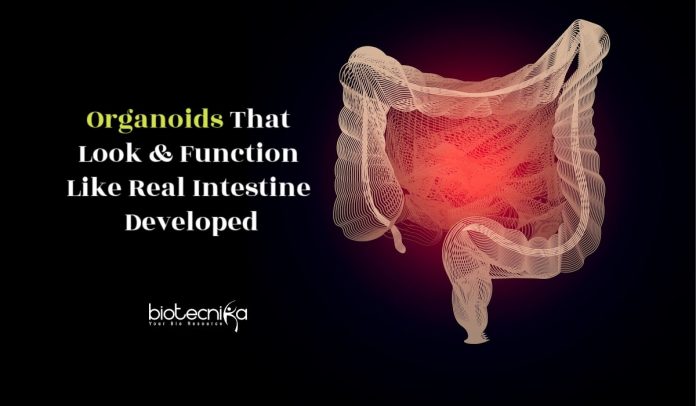Next Generation Intestinal Organoid More Similar to Real Tissue Developed
In modern life sciences, Organoids are becoming one of the most cutting-edge tools. The idea of organoids is to create miniature organs or tissues that behave like real organs.
Organoids are extremely valuable in medicine and research. From basic biological research to testing and drug development, organoids can replace animal models and expedite clinical trials by providing healthy or diseased human tissues. Moreover, organoid technology will also be used for replacing damaged organs and tissues in the future.
There were few drawbacks with the so far established methods of developing organoids. Stem cells develop into closed and circular tissues that have non-physiological shape and size with a short life span, resulting in tissues inconsistent with real-life organs in terms of anatomy and physiology.
Matthias Lütolf and his team at EPFL’s Institute of Bioengineering found a way to develop next generation intestinal organoids that functions and looks like real intestine by guiding stem cells. The study published in Nature exploits the property of stem cells to grow and organize themselves along a tube-shaped scaffold that mimics the surface of the native tissue, placed inside a microfluidic chip.
This gut-shaped scaffold within
a hydrogel of proteins found in the gut’s extracellular matrix supporting the cells was sculptured using a laser by the EPFL researchers. The hydrogel provided a form of “geometry” that would build the final intestinal tissue and a substrate on which the cells grow.The stem cells spread across the scaffold within hours of seeding in the gut-like scaffold and formed a continuous layer of cells with its characteristic villus-like domains and crypt structures. The scientists were surprised to find that stem cells knew how to arrange themselves to form the tiny functional gut.
They found that the geometry of the hydrogel scaffold directly influenced the stem cells’ behavior so that they differentiate in the areas outside and are maintained in the cavities, just like the real tissue. The stem cells also produced all types of differentiated cells found in the real gut, including those usually not found in organoids.
Mike Nikolaev, the first author of the study, said that a long-lived homeostatic organoid system in which cell birth and death are balanced was established with the introduction of a microfluidic system.
Like the real gut, the miniature intestines can be used to model host-microbe interactions or inflammatory processes and regenerate after massive tissue damage, which was not previously possible with any other lab-grown tissue model.
The method could be used to grow miniature organs like the liver, lungs, or pancreas and from biopsies of human patients. Researchers believe that intestinal organoid and similar next generation organoids like of high physiological relevance, opening up exciting perspectives for disease modeling, diagnostics, drug discovery, and regenerative medicine, can be developed and controlled with the help of tissue engineering.






























